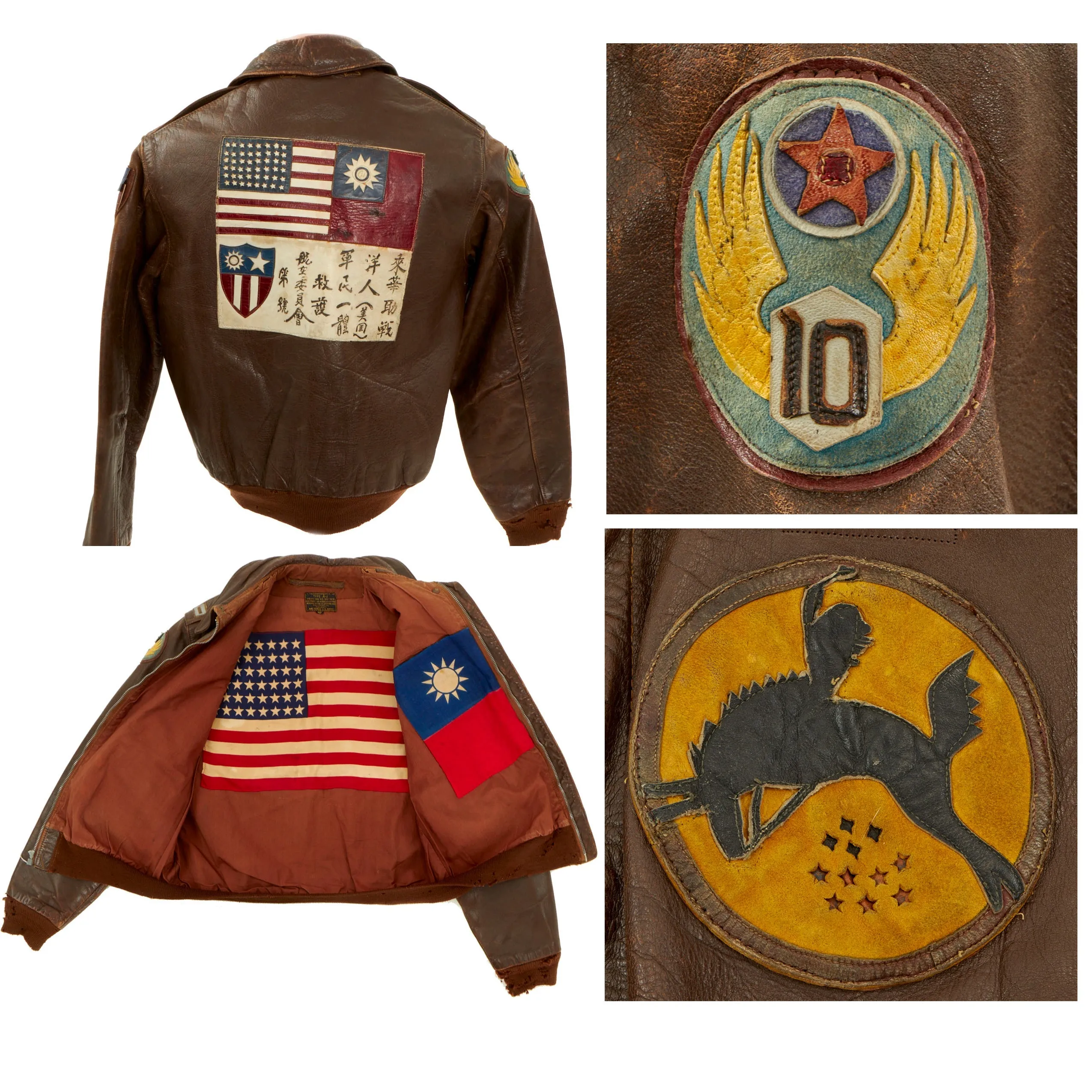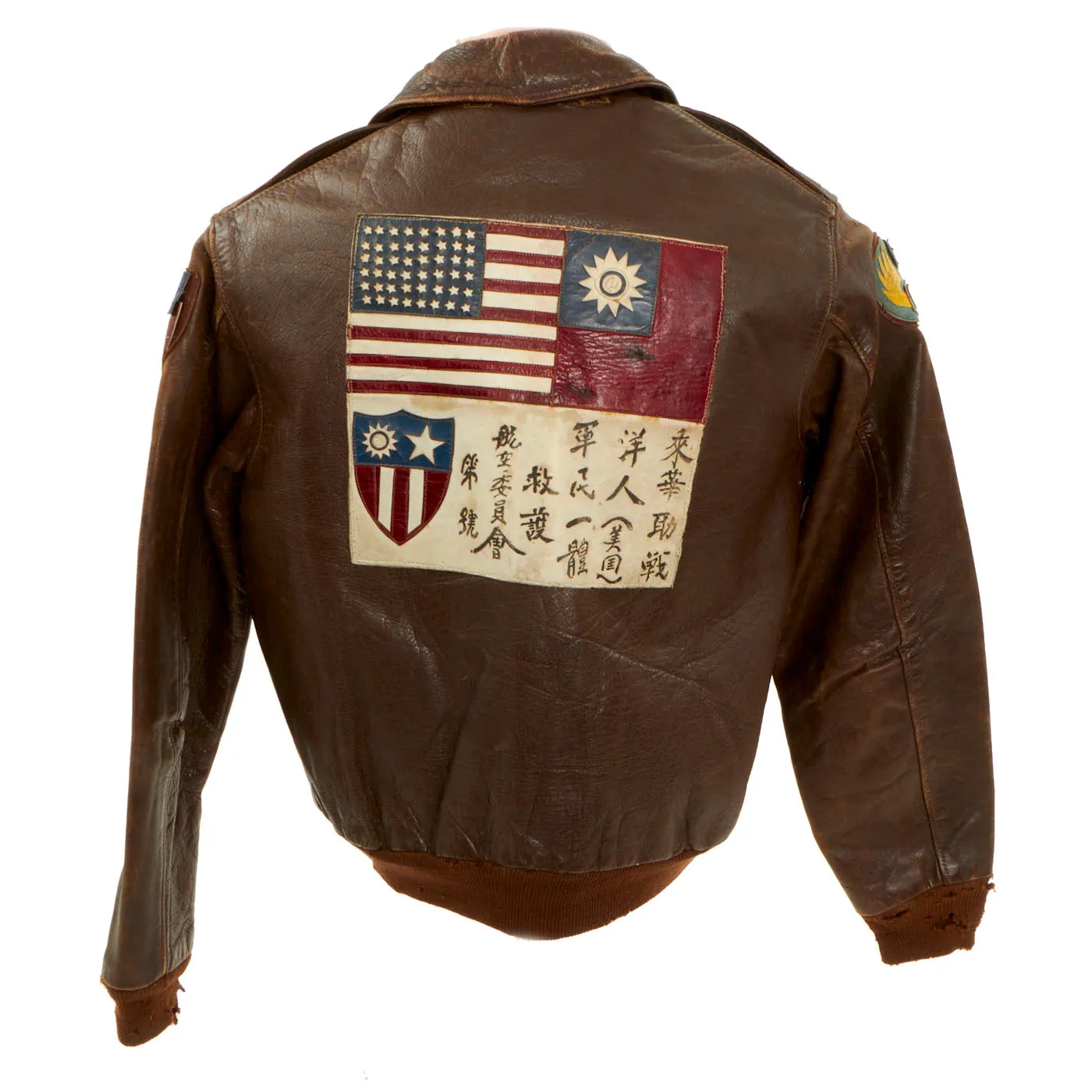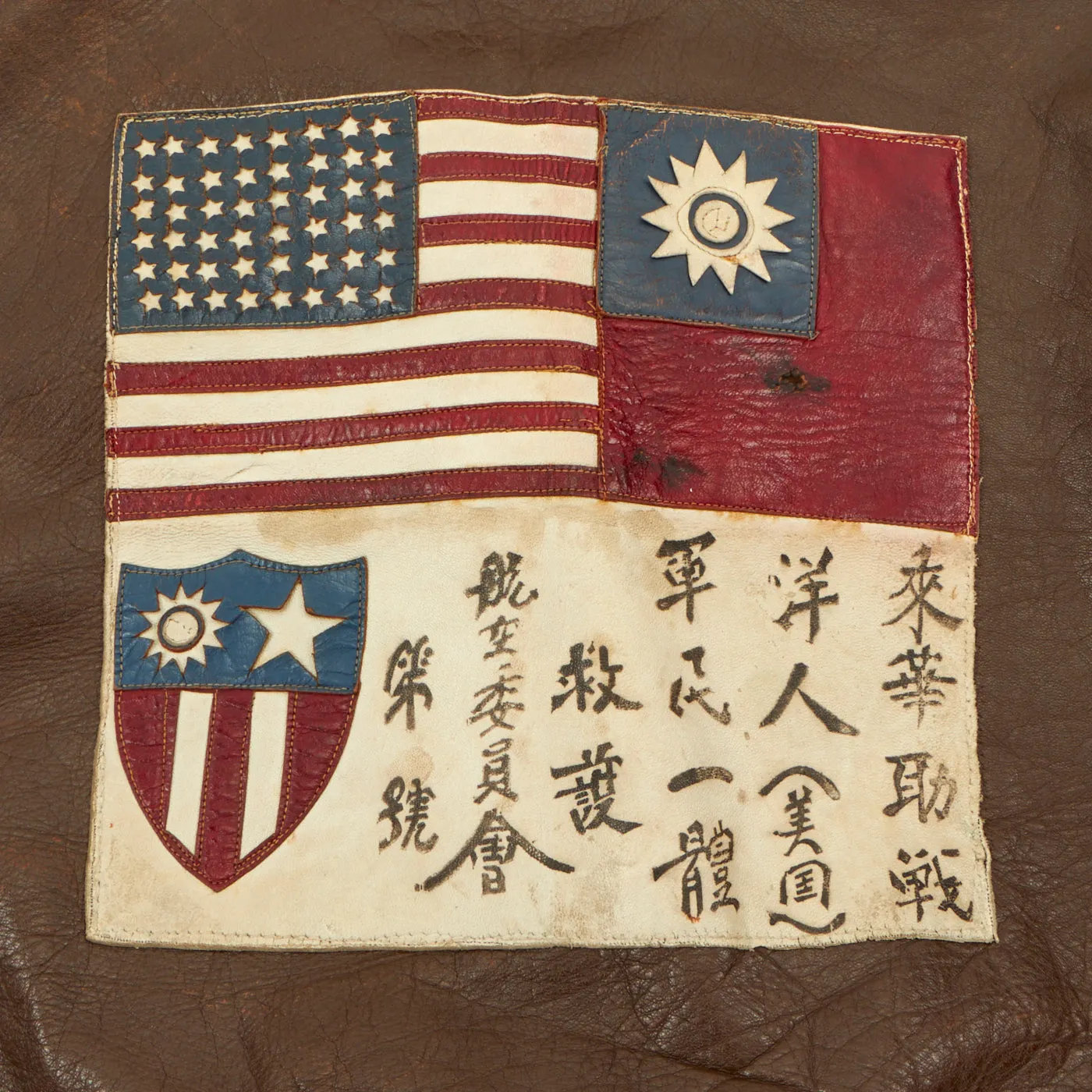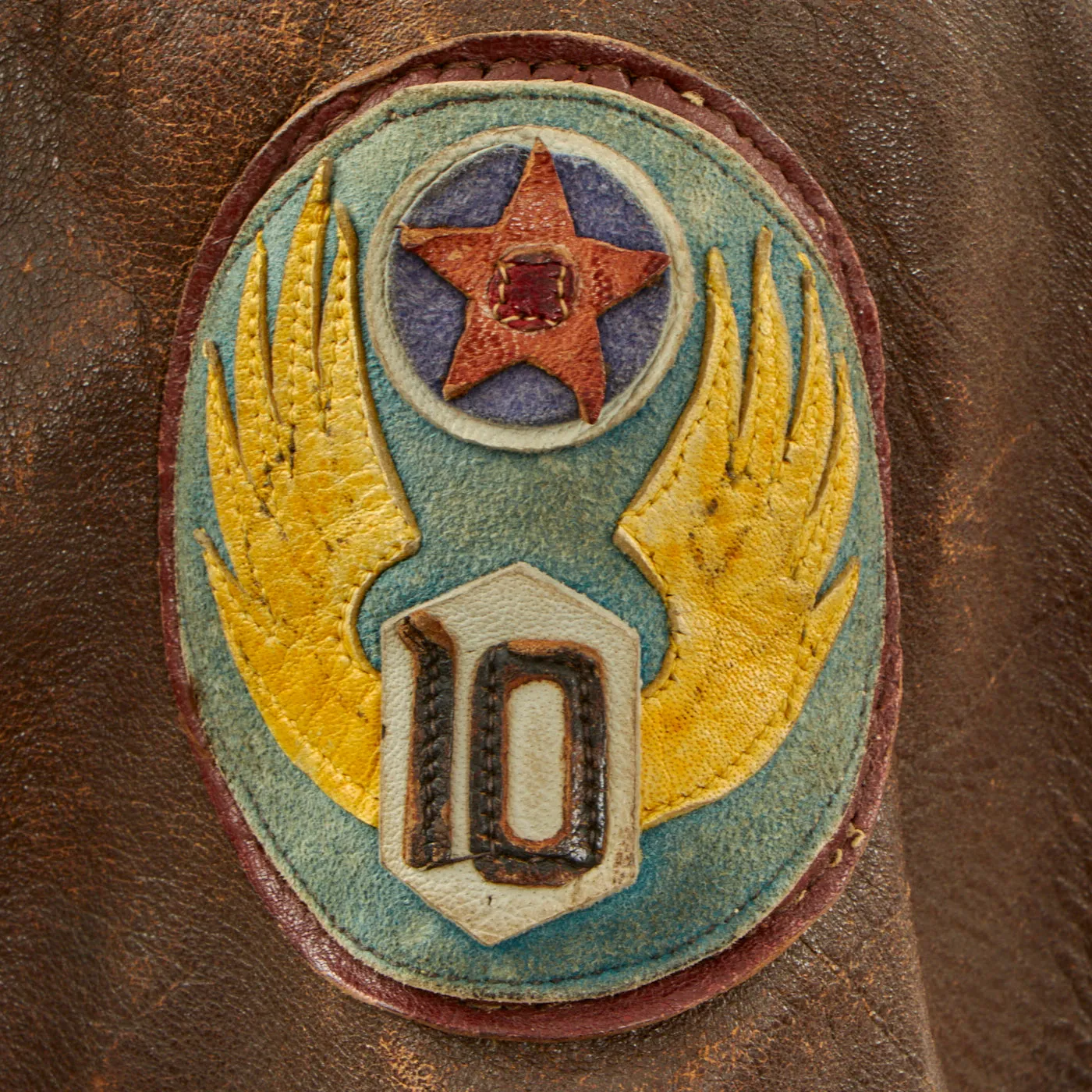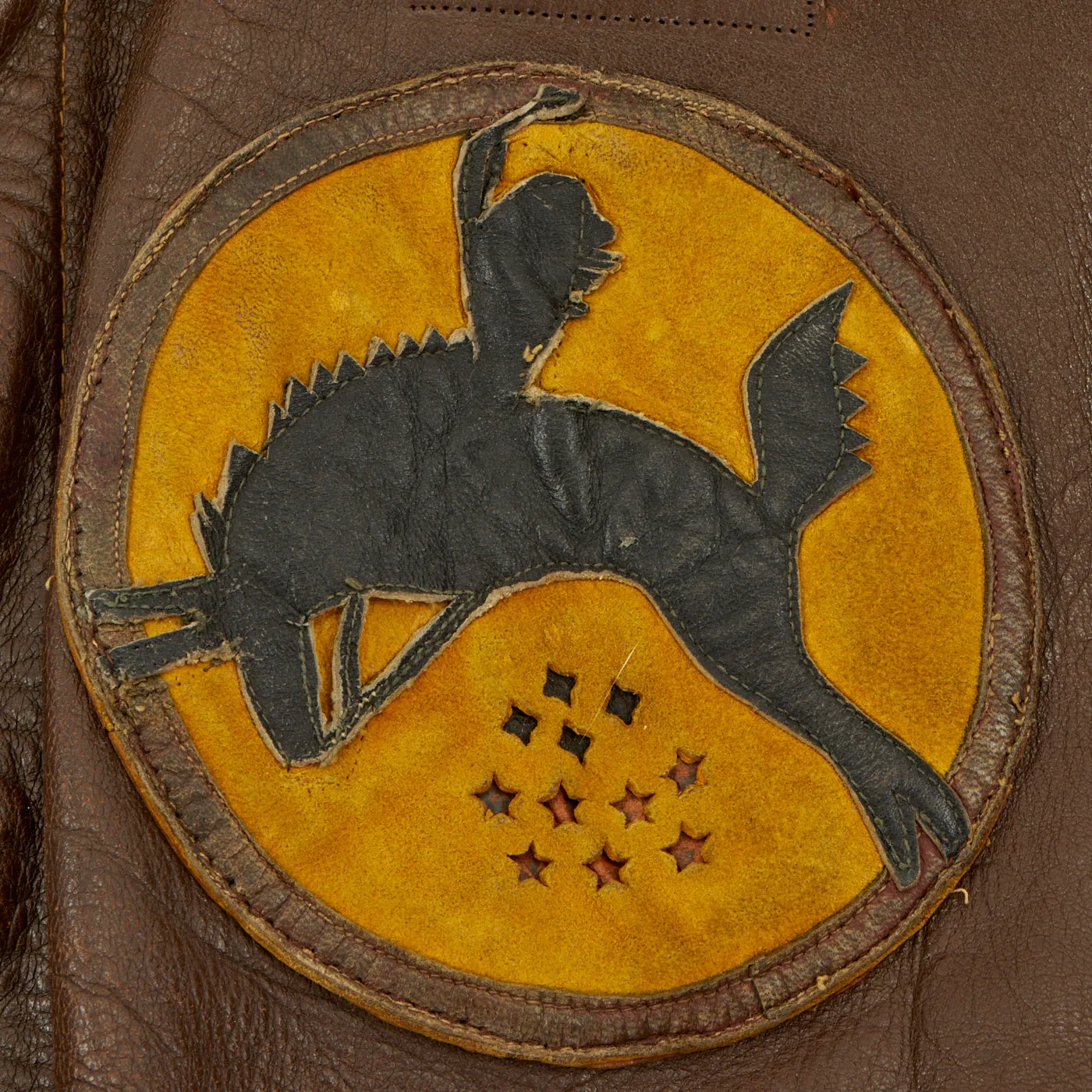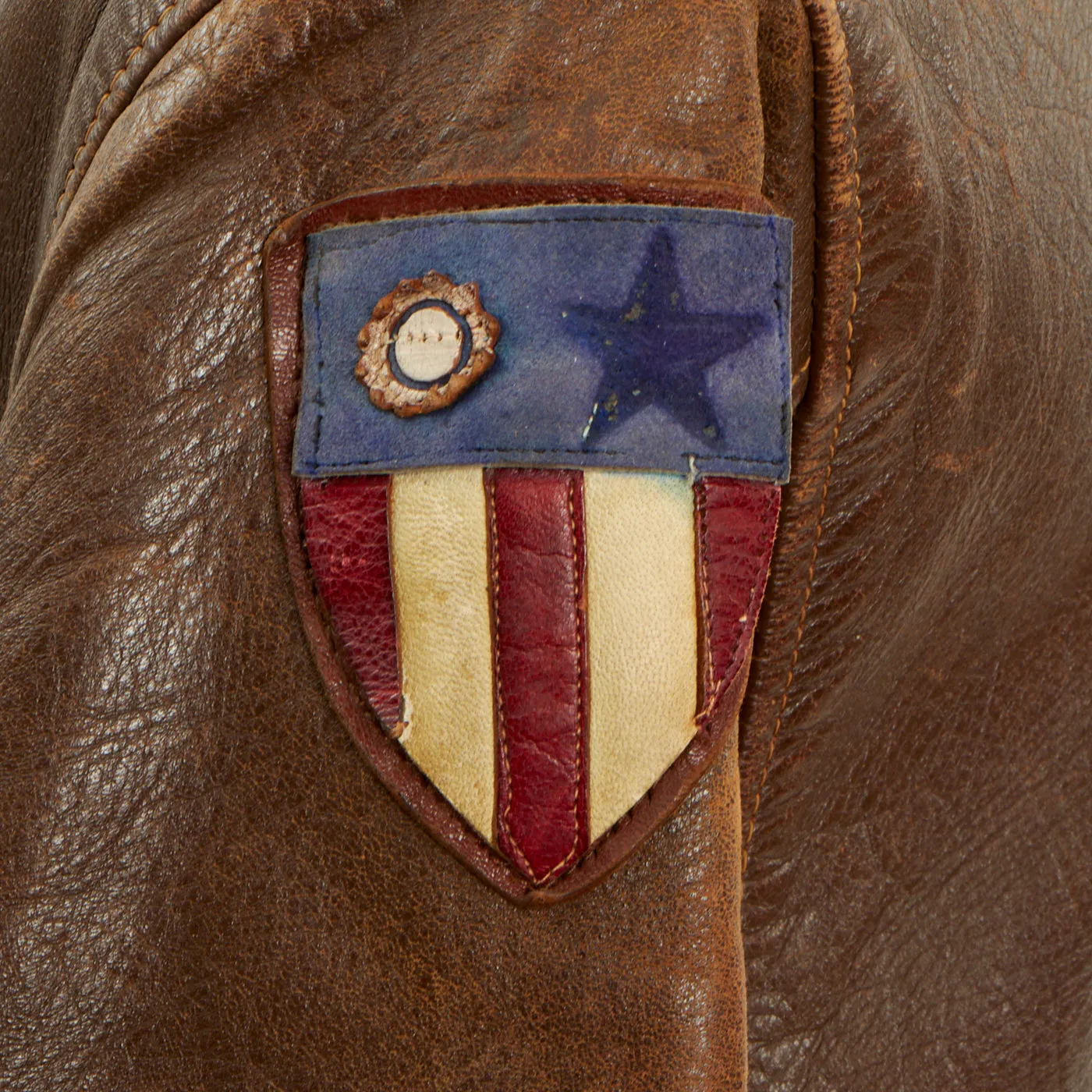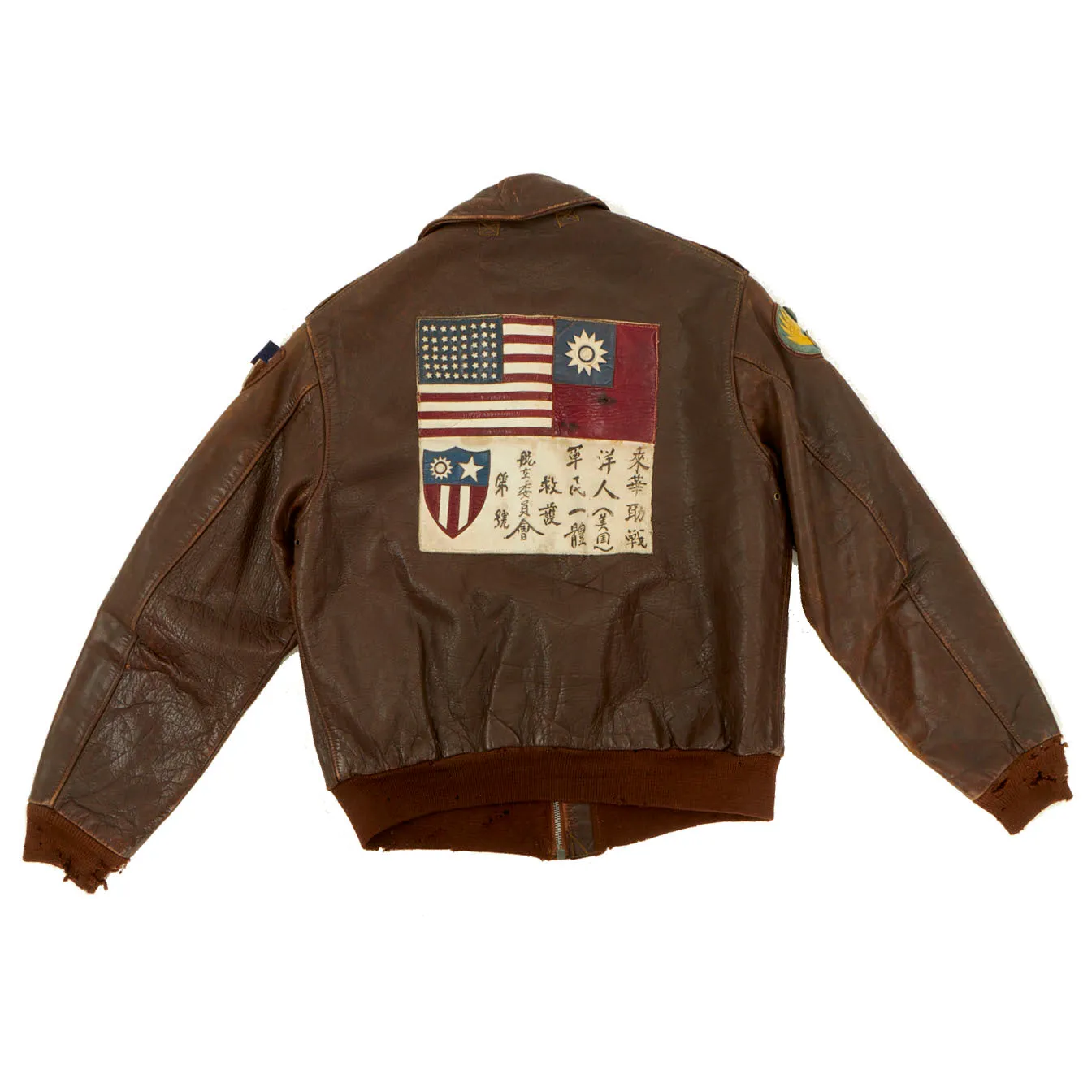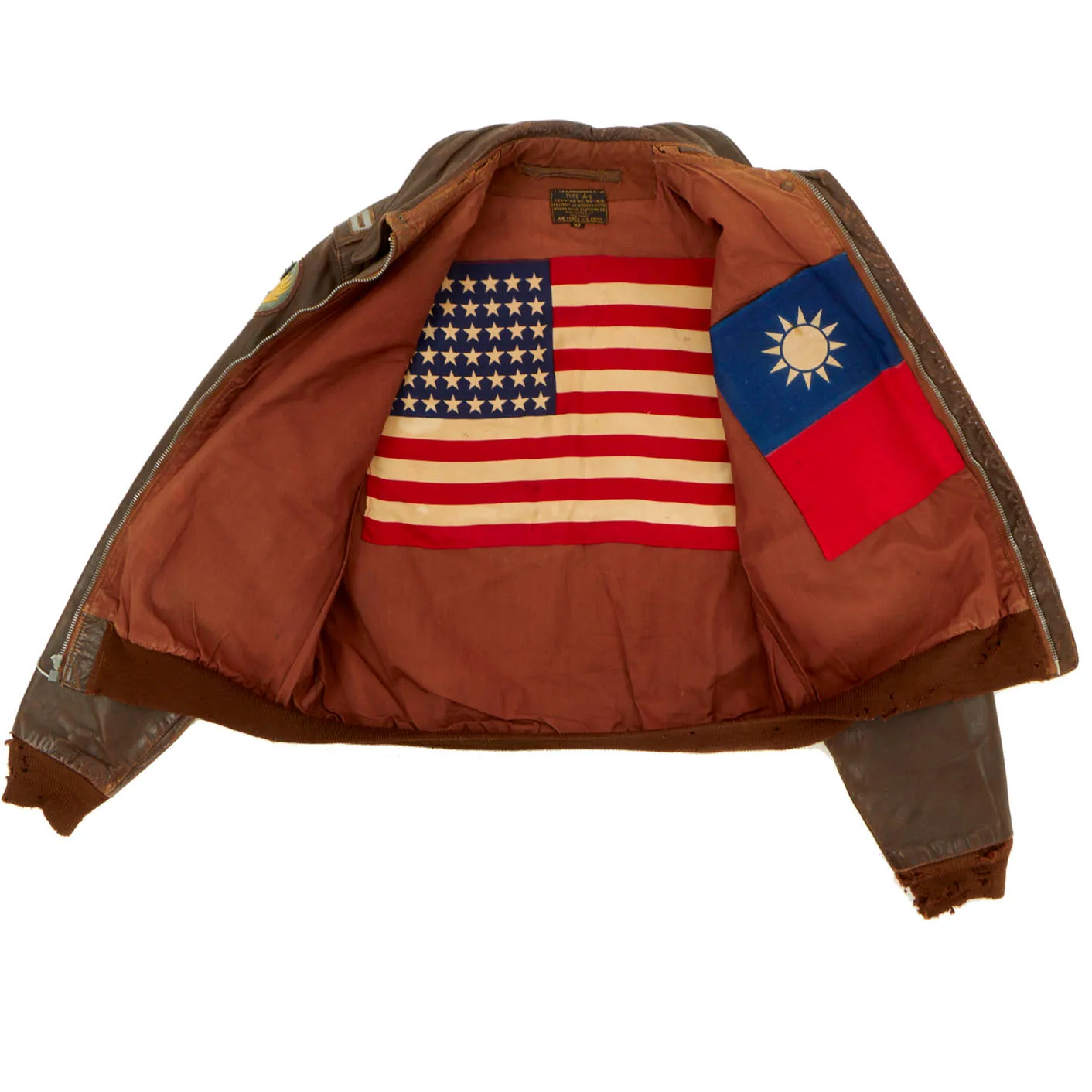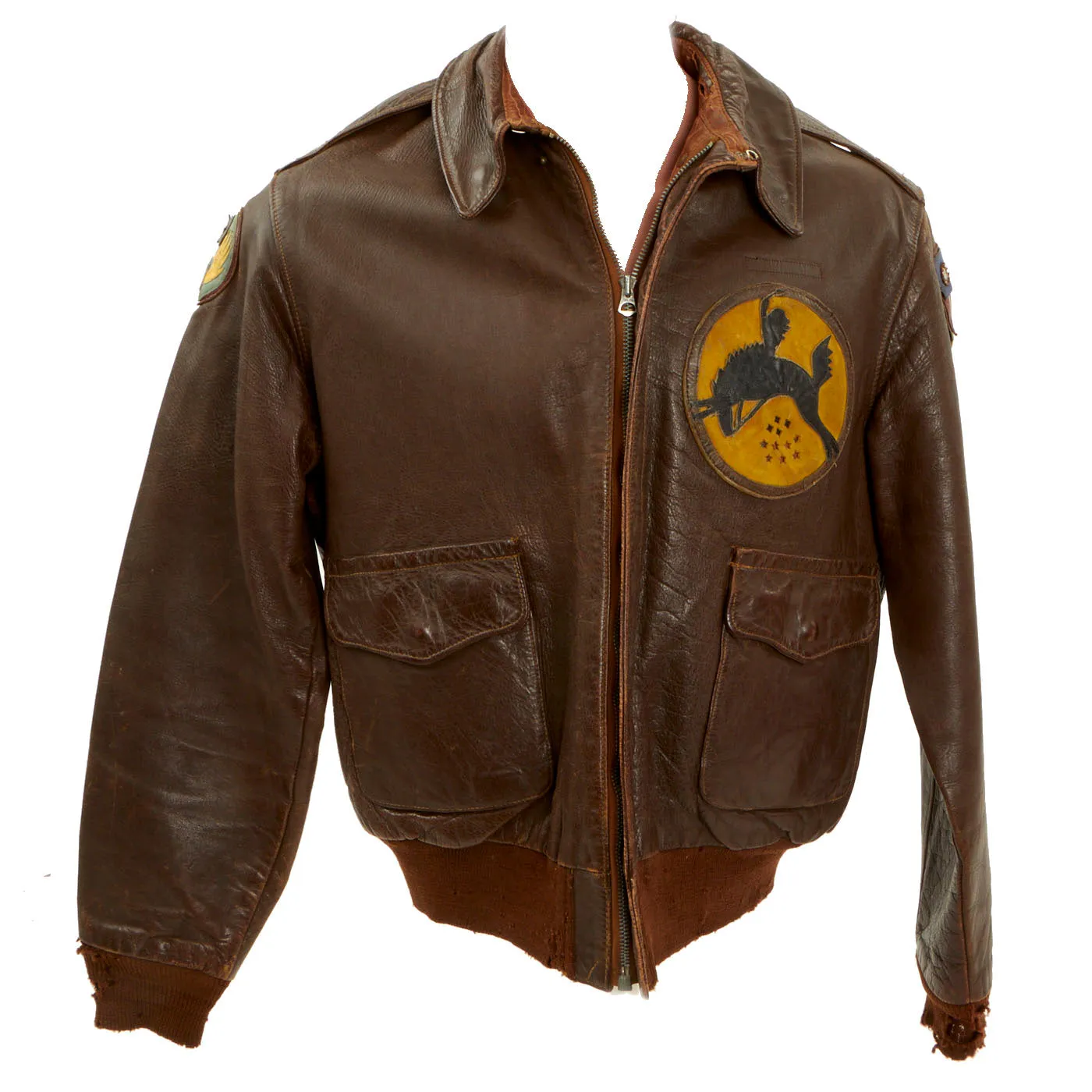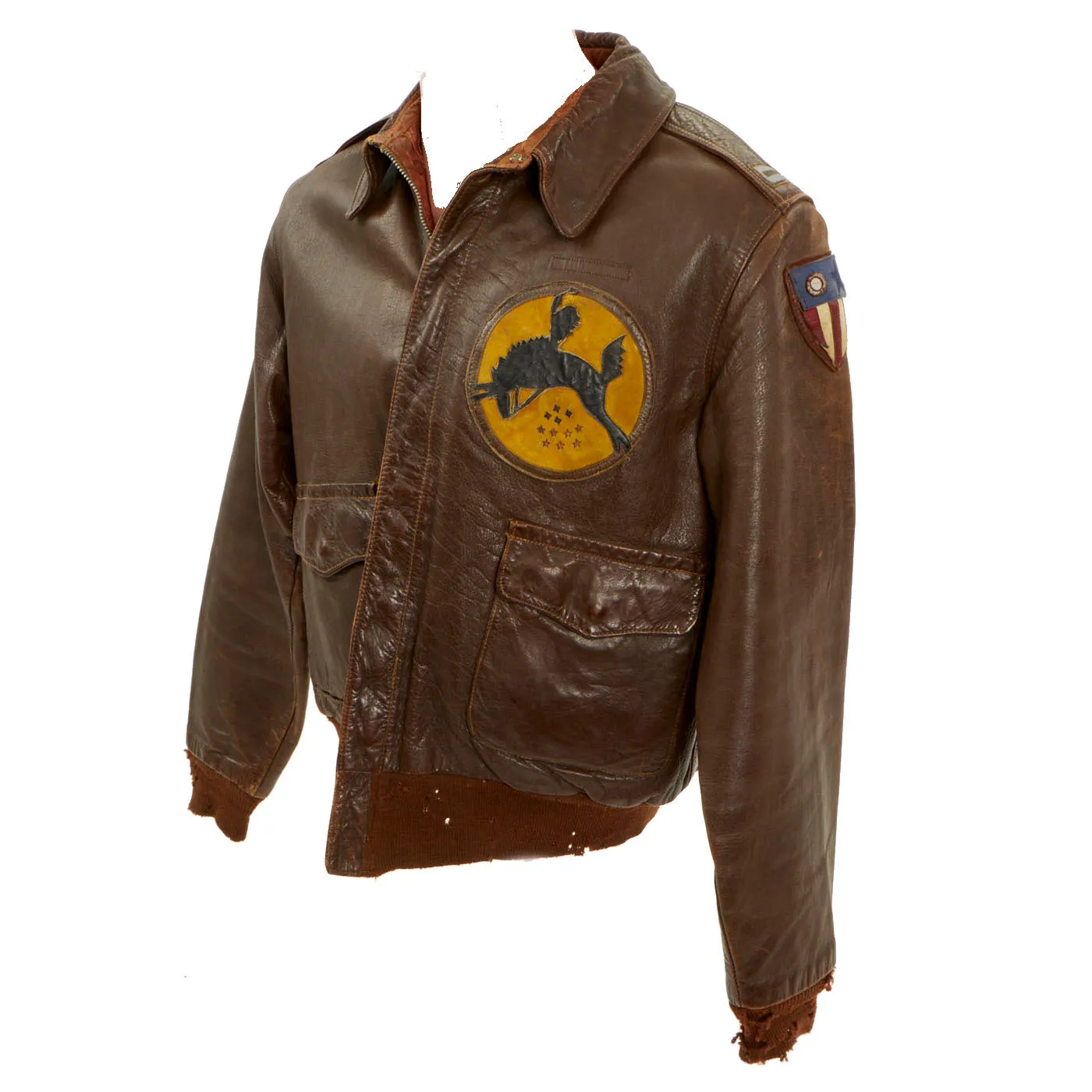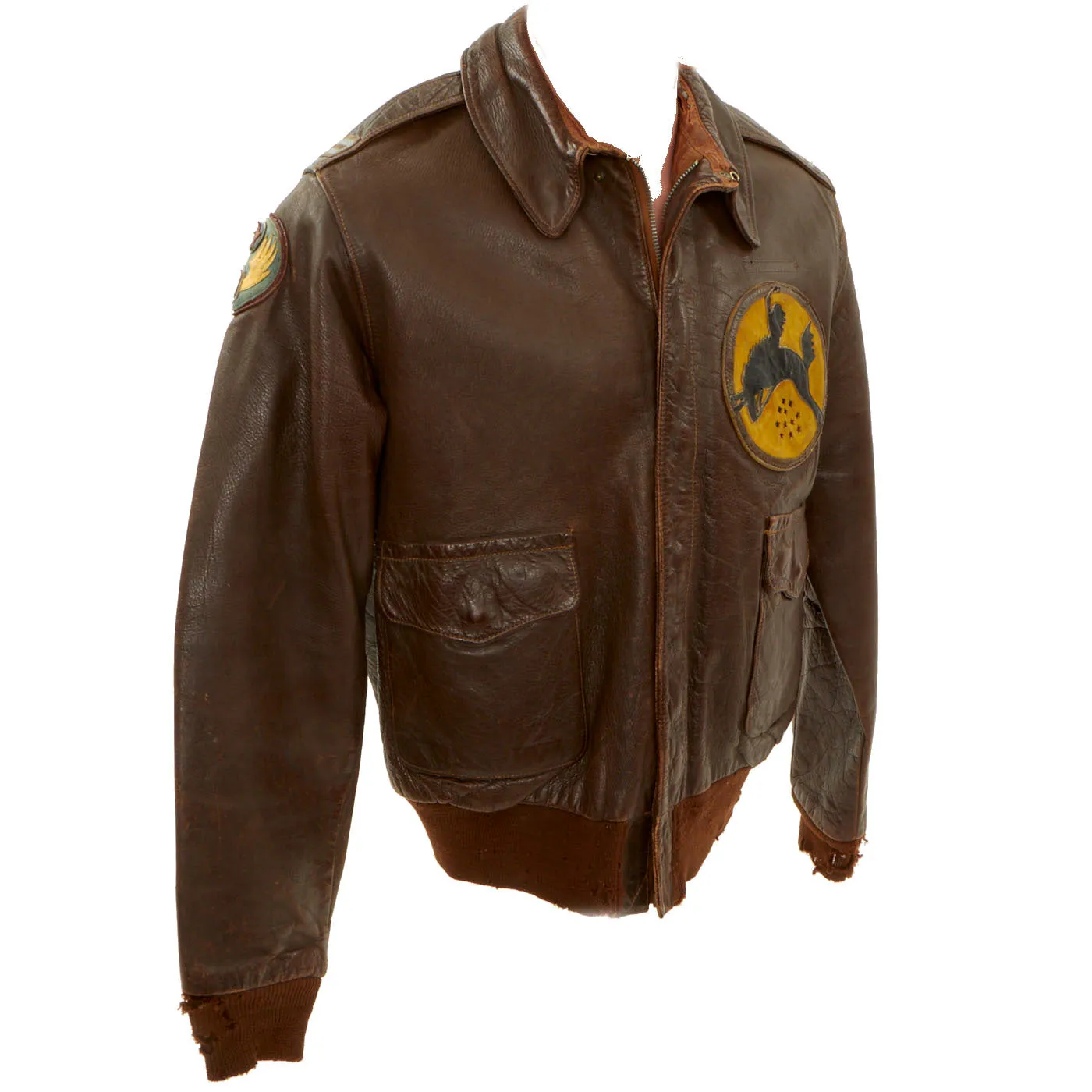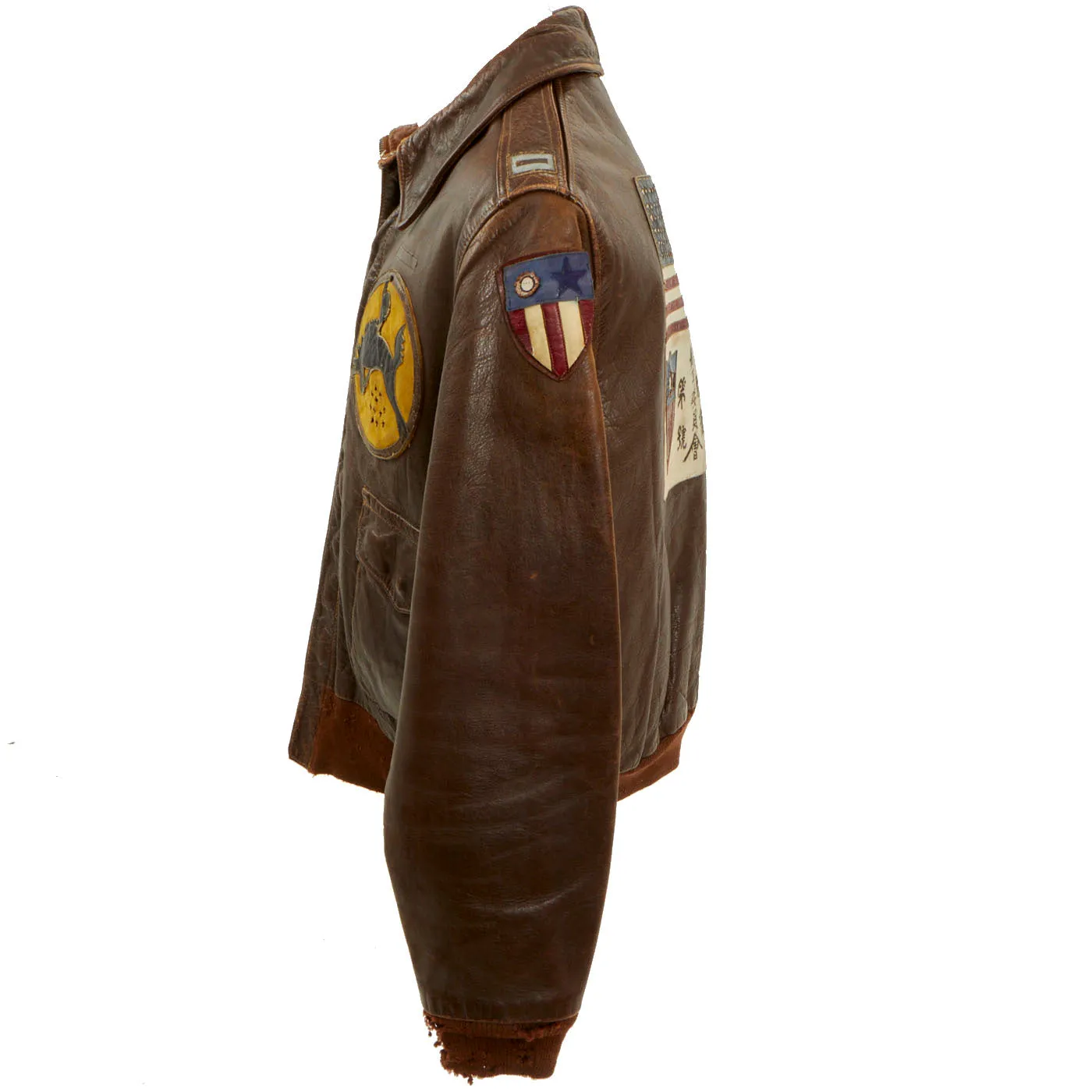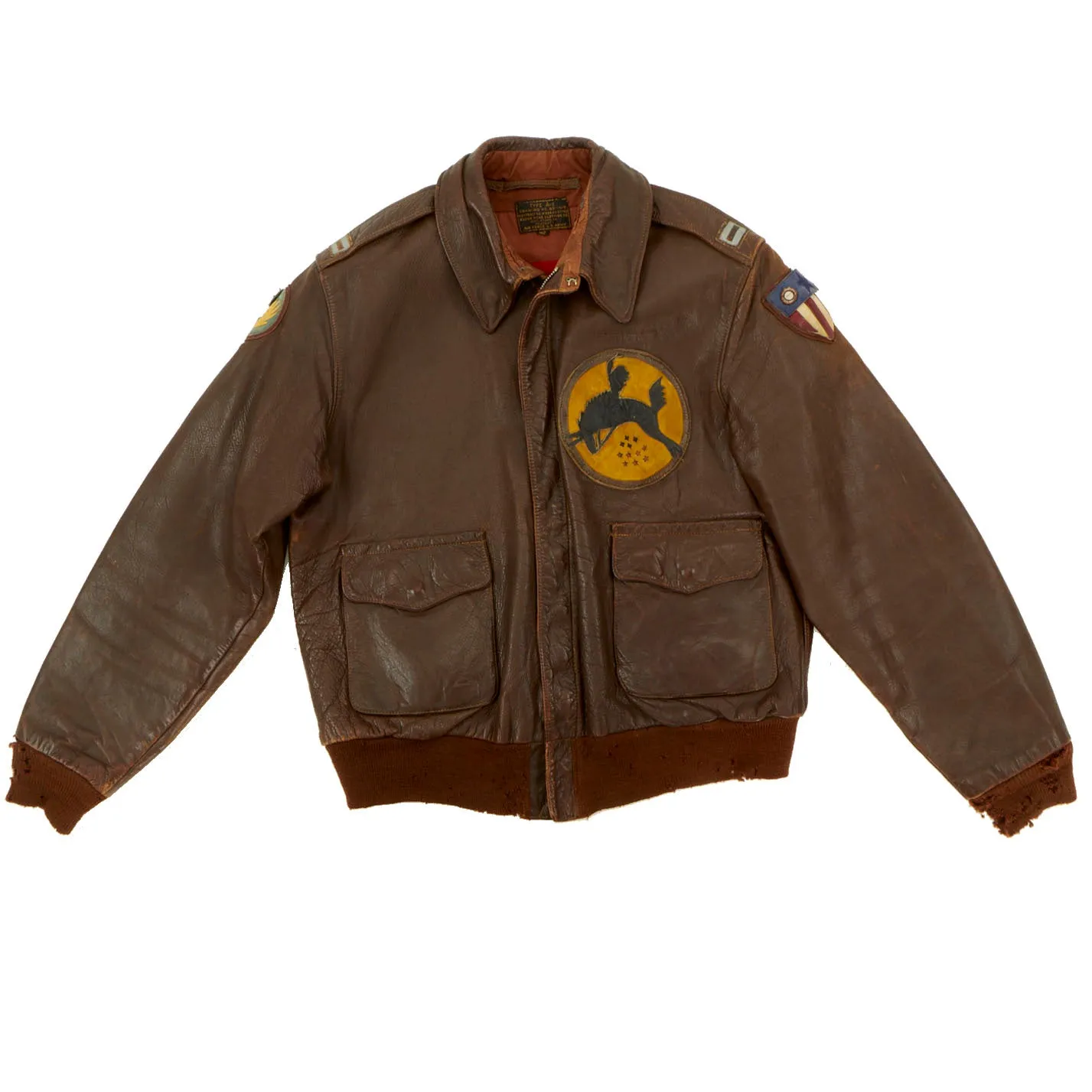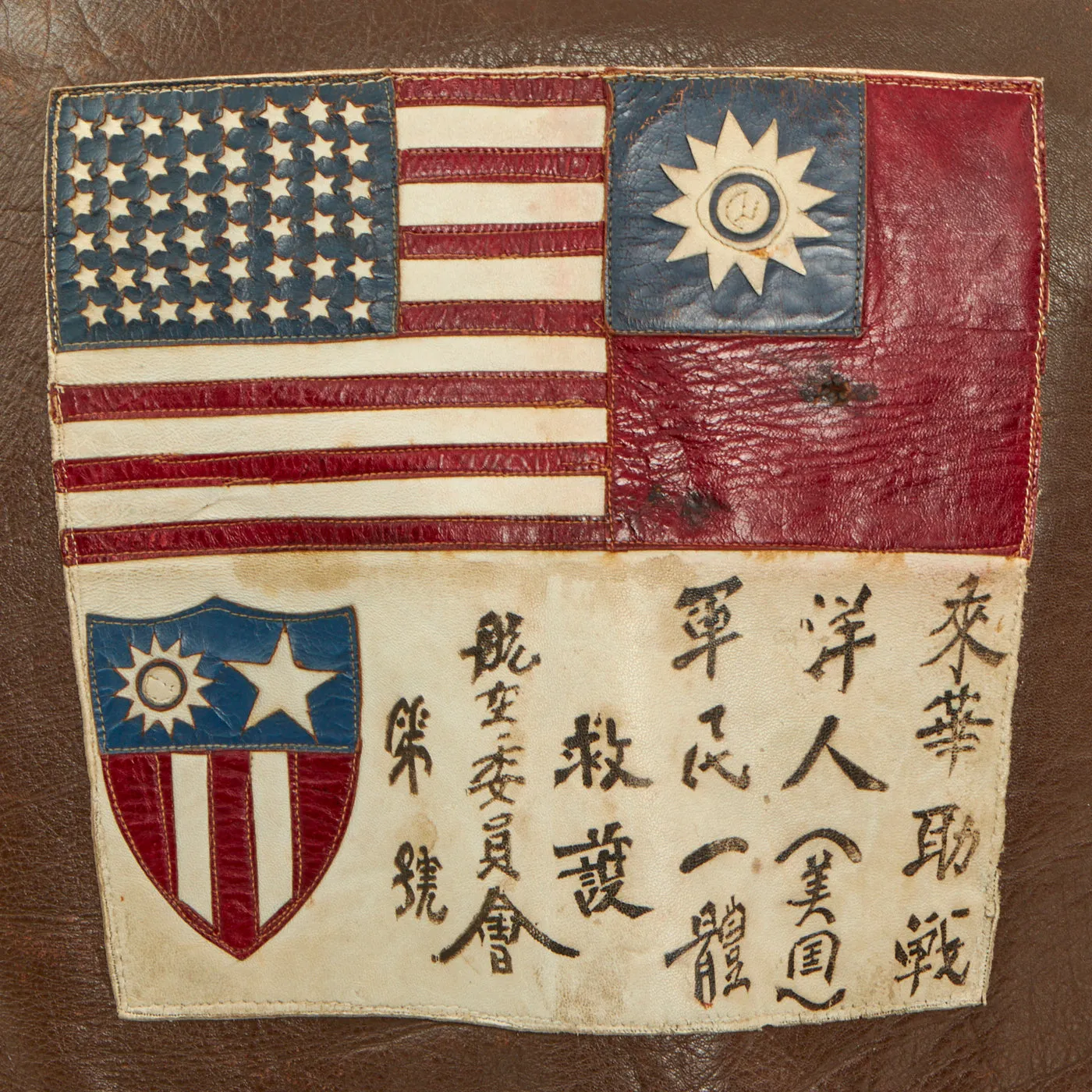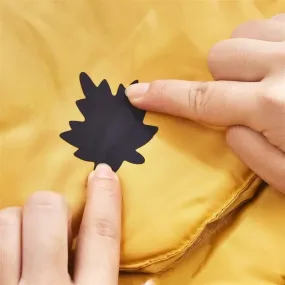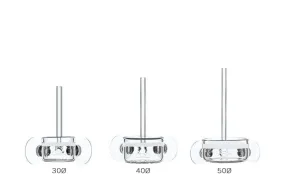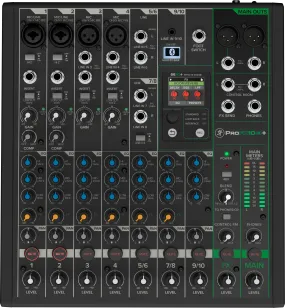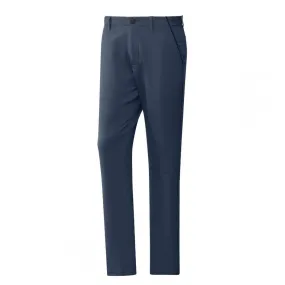Original Item: One-of-a-kind. This is an exceptional A2 leather flight jacket issued to a pilot who flew in the Pacific Theater CBI (China, Burma India campaign) during WW2 as a member of the 10th Air Force, 436th Bombardment Squadron.
This leather A-2 flight jacket is in near excellent condition in a size 42.
The best aspects of this incredible jacket are as follows:
- Leather CBI Blood Chit on the back which measures approximately 9 1/2 inches wide by 9 1/2 inches high. The Blood Chit is multi-piece construction and shows an American Flag, Chinese Flag, the CBI insignia and writing in Chinese characters. This blood chit served as a notice to any civilians who may come across an armed-services member – such as a shot-down pilot – in difficulties. As well as identifying the force to which the bearer belongs as friendly, the notice displays a message requesting that the service member be rendered every assistance.
- The 436th Bomb Squadron patch is an all leather multi-piece patch that features a silhouette of a bucking bronco with a rider.
- The two shoulder straps feature separate smaller leather tabs sewn on with Captains bars painted in silver.
- The two shoulder patches are for the 10th Air Force and the CBI theater, both of all leather multi-piece construction. The 10th AF patch is retained very nicely with some fading present, the CBI insignia unfortunately didn’t hold up as well as the 10th AF patch. The patch is separating from the shoulder on the right side and the white star is completely missing.
- The inside lining has two very beautiful flags sewn into it. The back lining features a rayon type printed American Flag with the left inside having a folded Chinese flag sewn into it. The best feature of the interior would have to be the Chinese flag. The way it was folded and stitched on allows it to double as an extra interior pocket, a rather ingenious way to double its purpose!
This is truly a wonderful example that has stood the test of time with all original components! Comes ready for research and display!
Measurements:
Collar to shoulder: 10”
Shoulder to sleeve: 25”
Shoulder to shoulder: 17”
Chest width: 21”
Waist width: 21”
Hip width: 18”
Front length: 27"
436th Bombardment Squadron in WWII:
After the Pearl Harbor Attack, the surviving aircraft operated from Hawaii until February 1942, becoming part of the air defense forces of the Territory. Moved to Australia with the 7th Bomb Group where the squadron reformed in northern Queensland in late February. Became part of the new Fifth Air Force. Moved to Java in the Dutch East Indies an attempt to stop the Japanese advance, however the small force of B-17s could do very little to stem the tide of the Japanese advance, launching valiant but futile attacks against the masses of Japanese shipping and returned to RAAF Townsville in early March.
Redesignated as the 436th Bombardment Squadron in April 1942 and left its B-17Es in Australia, being reassigned to the new Tenth Air Force in India where it was re-equipped with long-range Consolidated B-24D Liberators. For the balance of the war, carried out long distance heavy bomb raids over Japanese targets primarily in Burma, Thailand and Indochina; a theater with little news coverage, see China Burma India Theater; although also attacked Japanese targets in Southeastern China attacking airfields, fuel and supply dumps, locomotive works, railways, bridges, docks, warehouses, shipping, and troop concentrations in Burma and struck oil refineries in Thailand, power plants in China and enemy shipping in the Andaman Sea. (A more complete account is available in Lt Col (Ret) William Henderson's book, "From China Burma India to the River Kwai") Ceased bombing operations in late May 1945 and was attached to the Air Transport Command to haul gasoline from India over the Himalayas to China. Squadron demobilized in India, leaving B-24s to Indian Colonial forces, inactivated as a paper unit in the United States in early 1946.
The Tenth Air Force was constituted on 4 February 1942 and activated on 12 February, built up around a nucleus of air force personnel newly arrived from Java and the Philippines, under the command of Maj. Gen. Lewis H. Brereton. It had its headquarters at New Delhi. Components of the air force moved to India over a three-month period from March to May 1942. It was responsible for creating, operating and safeguarding the India-China Ferry, more commonly known as the Hump airlift, between 8 April and 1 December 1942, first with its Assam-Burma-China Command until 16 July, then the India-China Ferry Command until 1 December, when jurisdiction for the airlift passed to the Air Transport Command.
The Tenth Air Force initially provided control of all USAAF combat operations in the China Burma India Theater under theater commander Lt. Gen. Joseph Stilwell.
Under General Clayton Bissell's re-organization of the Tenth Air Force, five commanders reported to him: Brigadier General Caleb V. Haynes ran the India Air Task Force, created 8 October 1942, Brig. Gen. Claire Chennault ran the China Air Task Force, created 4 July 1942 to replace the American Volunteer Group, Robert F. Tate ran the India–China Ferry Command, Robert C. Oliver ran the Tenth's service arm and Francis M. Brady operated the large air base at Karachi. Haynes's task force assembled three bomber groups: the 7th Bombardment Group, the 51st Fighter Group and the 341st Bombardment Group (Medium). On paper were more squadrons not yet prepared for war—some had no aircraft, some had too little training and some were bare cadres.
In March 1943 the China Air Task Force was dissolved and its components made part of the new Fourteenth Air Force, activated in China under Chennault. The Tenth operated in India and Burma as part of the Allied Eastern Air Command until it moved to China late in July 1945.
The Tenth Air Force conducted offensive strategic bombing operations in Burma and Thailand and supported Allied ground efforts with close air support and operations against Japanese communications and supply installations. After the end of the war in China, the command headquarters departed from Shanghai on 15 December 1945, being attached to Army Service Forces at Fort Lawton, Washington, where the last personnel were demobilized and the command inactivated, being returned to HQ USAAF on 6 January 1946.

